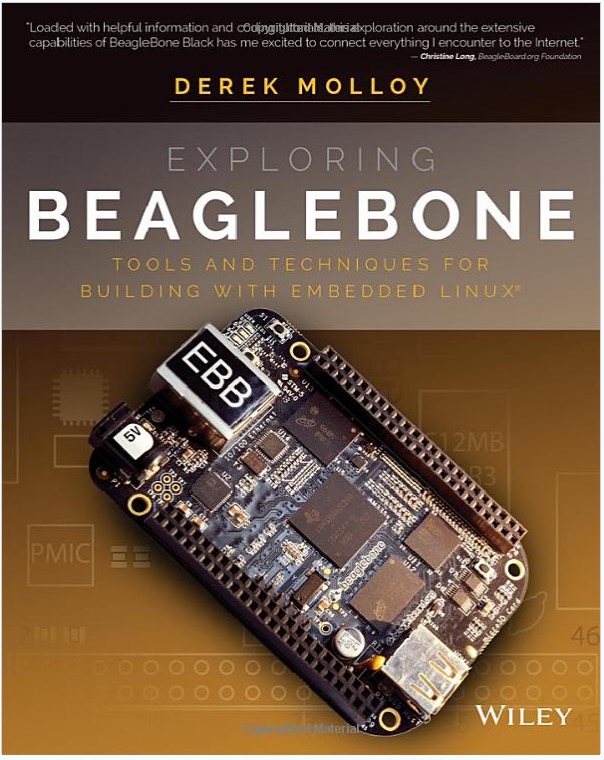
The BeagleBoard is a low-power open-source hardware single-board computer (i.e. embedded system) produced by Texas Instruments in association with Digi-Key and Newark element14. The BeagleBoard was also designed with open source software development in mind, and as a way of demonstrating the Texas Instrument’s OMAP3530 system-on-a-chip. The board was developed by a small team of engineers as an educational board that could be used in colleges around the world to teach open source hardware and software capabilities.
The BeagleBoard measures approximately 75 by 75 mm (3” x 3”) and has all the functionality of a basic computer. The OMAP3530 includes an ARM Cortex-A8 CPU, which can run Linux and other OS; Android is also being ported, a TMS320C64x+ DSP for accelerated video and audio decoding, and an Imagination Technologies PowerVR SGX530 GPU to provide accelerated 2D and 3D rendering that supports OpenGL ES 2.0. Video output is provided through separate S-Video and HDMI connections. A single SD/MMC card slot supporting SDIO, a USB On-The-Go port, an RS-232 serial connection, a JTAG connection, and two stereo 3.5 mm jacks for audio in/out are provided.
Built-in storage and memory are provided through a PoP chip that includes 256 MB of NAND flash memory and 256 MB of RAM (128 MB on earlier models).
The board uses up to 2 W of power and can be powered from the USB connector, or a separate 5 V power supply. Because of the low power consumption, no additional cooling or heat sinks are required.
BeagleBone RS485 CAN Bus Cape
This BeagleBone Serial Cape is the most flexible way to connect to other devices with a serial connection. This cape allows for simultaneous use of one RS485 port and one Controller Area Network (CAN) Bus interface.
- BB Black connector : for connecting BB Black
- CAN pin header
- CAN screw terminal
- RS485 pin header
- RS485 screw terminal
- DEBUG interface : for debugging BB Black OR other connected modules
- Power expansion pinheader : for connecting external power supply
- BB Black BOOT selection button
- CAN transceiver
- RS485 transceiver
- Power indicator
- BB Black UART TXD selection jumper
- BB Black UART RXD selection jumper
- RS485 transceiver enable jumper
Exploring BeagleBone – Tools and Techniques for Building with Embedded Linux
Exploring BeagleBone is a hands-on guide to bringing gadgets, gizmos, and robots to life using the popular BeagleBone embedded Linux platform. Comprehensive content and deep detail provide more than just a BeagleBone instruction manual–you’ll also learn the underlying engineering techniques that will allow you to create your own projects. The book begins with a foundational primer on essential skills, and then gradually moves into communication, control, and advanced applications using C/C++, allowing you to learn at your own pace. In addition, the book’s companion website features instructional videos, source code, discussion forums, and more, to ensure that you have everything you need.
The BeagleBone’s small size, high performance, low cost, and extreme adaptability have made it a favorite development platform, and the Linux software base allows for complex yet flexible functionality. The BeagleBone has applications in smart buildings, robot control, environmental sensing, to name a few; and, expansion boards and peripherals dramatically increase the possibilities. Exploring BeagleBone provides a reader-friendly guide to the device, including a crash course in computer engineering. While following step by step, you can:
- Get up to speed on embedded Linux, electronics, and programming
- Master interfacing electronic circuits, buses and modules, with practical examples
- Explore the Internet-connected BeagleBone and the BeagleBone with a display
- Apply the BeagleBone to sensing applications, including video and sound
- Explore the BeagleBone’s Programmable Real-Time Controllers
Hands-on learning helps ensure that your new skills stay with you, allowing you to design with electronics, modules, or peripherals even beyond the BeagleBone. Insightful guidance and online peer support help you transition from beginner to expert as you master the techniques presented in Exploring BeagleBone, the practical handbook for the popular computing platform. Visit the companion website for more information at exploringbeaglebone.com.







